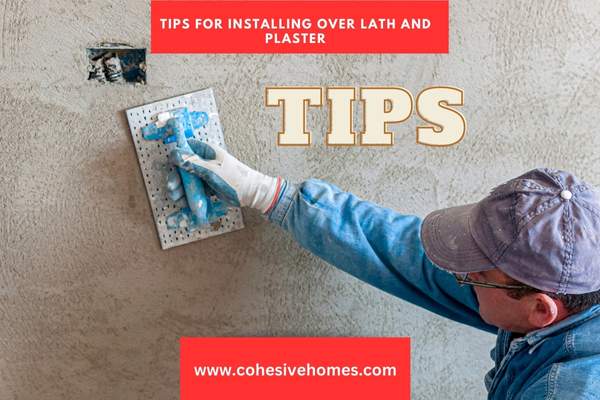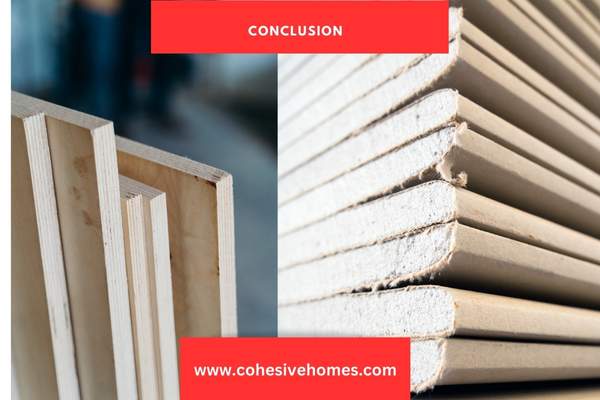Have you been considering renovating your home, but don’t know where to start? Well, if you’re working with an older home, chances are you have lath and plaster walls. Lath and plaster have been common building material for centuries and are often found in older homes. But can you board over lath and plaster without losing any of the charm of the old wall or causing damage?
The answer is not as simple as “yes or no. There are several things to consider before boarding over lath and plaster.
In this blog post, we’ll explore the potential pitfalls and best practices when working with lath-and-plaster walls.
We’ll also provide tips on how to board over these walls in a way that preserves their character while providing a safe and secure interior space. Read on to learn more!
Introduction to Lath and Plaster

If you’re looking to do some interior work, you may have heard of lath and plaster.
So what is it? Lath and plaster is a method of building walls used in the past, involving metal strips or wooden laths stretched across the wall, which are then plastered with a mixture of water, sand, and other materials. You may still find it in old homes or buildings.
It’s important to understand what type of wall material you’re dealing with when making renovation plans.
For example, drywall is easier to work on than lath and plaster, as the latter holds up less well over time because of age or wear from moisture.
That said, if you need to board over lath and plaster, it can be done.
You’ll generally just need to make sure that the existing surface is effectively secured and free of any flaws before covering it with boards or panels, and that is a job best left to an experienced professional.
So consider hiring an expert if you plan on taking this route!
Advantages and Disadvantages of Boarding Over Lath and Plaster

Boarding over lath and plaster is a relatively straightforward process that can provide multiple benefits to your property.
But it’s important to understand that the decision to board over lath and plaster comes with its own set of pros and cons.
First, let’s look at the advantages. Boarding over lath and plaster allows for better insulation and airtightness, which in turn will help keep your home more energy efficient and reduce heating costs.
The boards provide a more even surface to run cables or pipes through, as well as making it easier to hang pictures or other wall decorations without damaging the boards or plaster.
On the other hand, there are also some disadvantages to consider before you decide on boarding over lath and plaster.
The boards can make noise when they expand or contract due to changes in temperature or humidity.
Additionally, some people find that boarding over lath and plaster can result in rooms feeling quite enclosed due to the lack of bounce-back sound waves created by the solid walls.
Finally, boarding over lath and plaster should only be done by an experienced tradesperson; otherwise, certain building regulations may not be met, which could lead to issues down the road.
In summary, there are several advantages as well as some drawbacks associated with boarding over lath and plaster, so weigh up all your options carefully before making a decision!
Types of Board Options Available

You may have heard that you can board up your lath and plaster walls. But what kinds of boards are available?
Let’s take a look at three main types:
Plywood
Plywood is one of the most popular choices for boarding over lath and plaster. It’s reliable, easy to work with, and you can find it in different thicknesses.
Plus, when it comes time to hang something on the wall, plywood takes well to screws and nails.
However, depending on how much your walls move, plywood may not be a good choice long-term since, although it’s strong, it doesn’t offer much room for movement.
OSB Boards
OSB boards are also an easy-to-source option. The panels come in thicker varieties than plywood, which gives them some flex if your walls expand or contract due to temperature or humidity changes.
And they resist warping better than particleboard or MDF boards over time.
“Plus, they don’t need to be treated with fire retardants like other boards do.”
Drywall Sheets
Drywall sheets are another great option for lath and plaster walls because their extra length provides more reinforcement against movement compared with smaller panels like plywood and OSB boards.
They come in various thicknesses as well as a range of textures, so you can choose the look that works best with your home decor.
Preparing the Lath and Plaster Wall

If you’re thinking of boarding over your lath and plaster walls, first you need to make sure that they’re structurally sound.
Check for cracks and crumbling, which can indicate underlying issues like water damage.
Strengthening
You also want to strengthen the lath and plaster wall to avoid any sagging or buckling issues in the future.
To do this, you’ll need to drive wooden or plastic battens into the wall at regular intervals. This will help evenly distribute the load of new boards and provide a level surface for them.
Insulation
If you’re looking for extra insulation, some people opt to use rigid insulation foam board between the battens.
The foam will add another layer of protection between the existing lath and plaster and your new boards to help keep in more heat during the cold months.
Once your battens are secure and your insulation is added (if desired), it’s time for the next step: adding drywall over the 2x2s, 3x2s, or 4x2s battens. Doing this will help create a strong wall that is thermally insulated and ready for paint!
Tips for Installing Over Lath and Plaster

If you’re considering boarding over lath and plaster walls, here are some tips to make sure your project is successful.
Use a Moisture Resistant Board
You want to make sure that you use a moisture resistant board when boarding over lath and plaster. This will ensure that any dampness in the structure is not allowed to come through the walls.
Look for a board with a moisture resistance rating of EN 636-3 Class C or above.
Seal Gaps and Joints
Once you’ve installed the boards, fill any seams or gaps either with silicone sealant or expanding foam.
Alternatively, you can cover them with joint tape and use a filler such as sanded grout to completely seal the joints.
Reinforce Edges
You should also reinforce all edges at the corners of rooms and around doorframes, windowsills, skirting boards, and other fixtures for extra strength once the boards have been installed.
It is best to use metal L-shaped support bracketing or 16G galvanized steel studs for this purpose.
By following these simple tips when installing over lath and plaster, you should be able to create a strong and sturdy structure that will last for years to come!
Finishing Touches for a Professional Look

The finishing touches of your boarding project will make it look more professional and increase the lifespan of your lath and plaster.
One of the best ways to achieve this is by using corner beads, which will reinforce the edges of your board edges.
This is especially important for any wall that takes a lot of blows, like in a hallway or bedroom.
Using corner beads isn’t difficult; all you need to do is attach them to the lath and plaster with screws or nails, then apply the skim coat or plaster over them until they are flush with the wall surface.
If you’re looking for a smooth, professional finish, consider sanding down any sharp edges before applying the finishing paint or wallpaper.
Other Considerations
In addition to corner beads, there are other things you’ll need to keep in mind when boarding over lath and plaster:
- Seal gaps and cracks between boards with caulk to prevent moisture from penetrating and damaging the wall.
- During the boarding process, if you find any weak points in the wall, reinforce them by screwing some extra boards into place.
- Use quality supplies — Always invest in quality supplies for your project; cheap materials can lead to a lower-quality finish, a shorter lifespan, and less attractive results overall.
By taking the time to prepare and finish your lath and plaster walls properly, you can create a beautiful result that will last for decades.
Conclusion

Although it may be possible to board over lath and plaster, there are several potential pitfalls to consider before taking on this project.
If you decide to proceed with the project, ensure that you research and understand exactly what it involves, as well as the associated risks.
It’s also important to use the right materials and to ensure that the walls are sound before starting.
Finally, it could be worth getting professional advice to make sure you undertake the job correctly and safely.
The right advice can save you time, money, and potential frustration in the long run. In the end, it’s better to be safe than sorry and know that you’ve done the job properly.
FAQS
Is it necessary to remove lath and plaster before boarding over it?
Professionals recommend this because the weight of the new board can cause shifting and reduce room depth.
Which board should you use?
Use a thicker board, such as 15mm or 18mm thickness for added stability and to prevent bowing.
Can you DIY?
Boarding over lath and plaster can be challenging, and it may be best to hire a professional due to hidden electrical or plumbing components and the necessary expertise and tools required.
